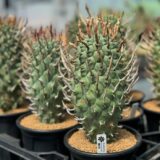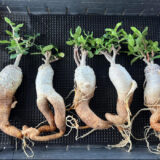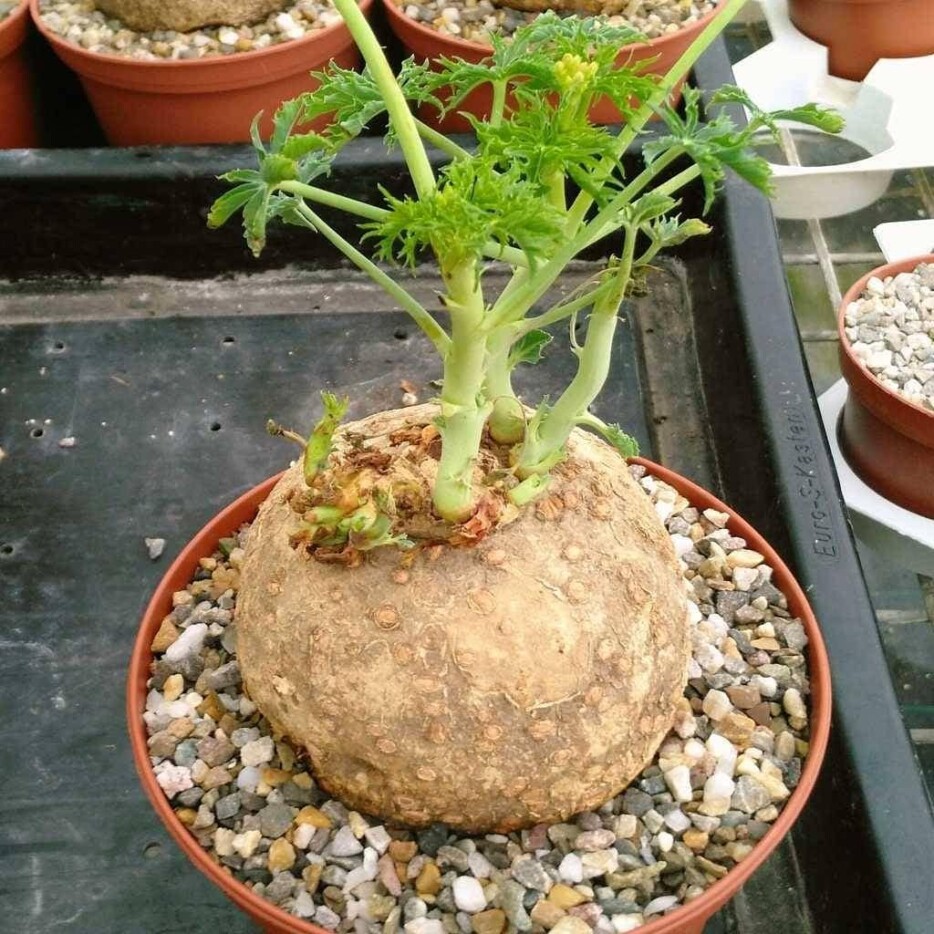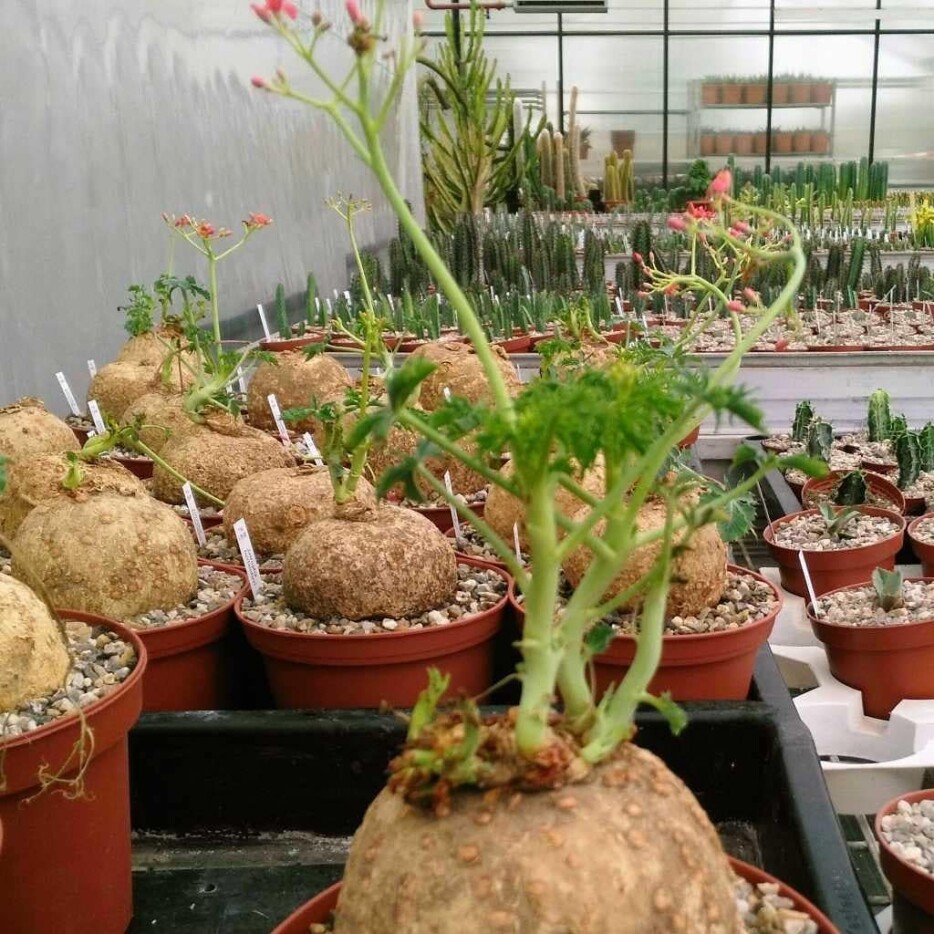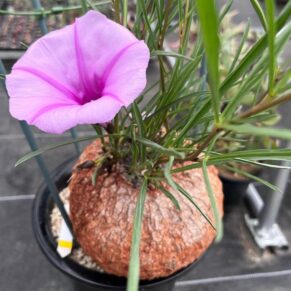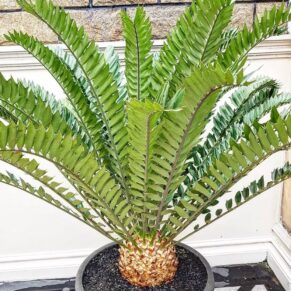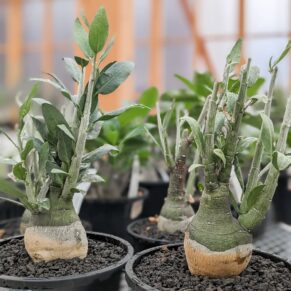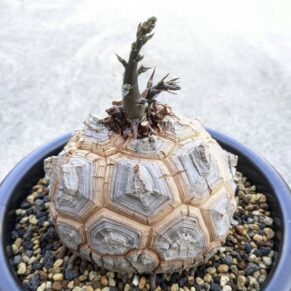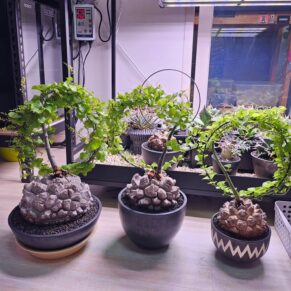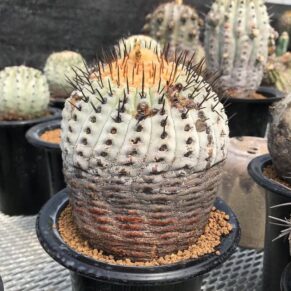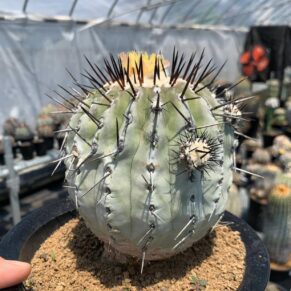- Your cart is empty
- Continue shopping
Shop
Jatropha berlandieri
Jatropha berlandieri
$85.00
Buy premium Jatropha berlandieri plants and seeds—perfect for drought-tolerant landscaping and natural medicinal uses.
Availability:28 in stock
Add to cart
Buy Now
1. Introduction: Jatropha berlandieri – The Buddha Belly / Baseball Plant
Jatropha berlandieri, often called Buddha belly plant or baseball plant, is a striking caudiciform succulent from Texas and Mexico. Its key feature is a thick, globular caudex that stores water, topped in spring by a spray of slender, deeply lobed leaves and vibrant red blooms. shop jatropha here caudexplants.com Its sculptural form, seasonal transformation, and low‑maintenance elegance make it a standout specimen for collectors and desert‑plant lovers.Facebook group for enthusuasts join now
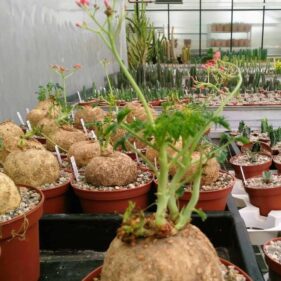
It thrives in hot, arid landscapes and mirrors its native habitat in its resilience. As it matures, the caudex becomes an arresting focal point—smooth, white‑washed, and patiently growing—while above it new seasonal stems rise, foliage unfurls, and blossoms appear.instagram
2. Botanical Description & Natural Habitat
Native to the clay-rich plains of south-central Texas and northeastern Mexico, Jatropha berlandieri evolved to endure long dry spells, intense sun, high heat, and poor soil. In the wild it grows scattered among brush on clay flats, emerging after rains to shoot branches and leaves before retreating to dormancy as conditions dry.
Shares habitat with tough grasses and shrubs, and its water-storing caudex enables survival even when rainfall is scarce. Over many years, it becomes a notable sculptural presence.
3. Visual Features & Seasonal Transformation
-
Caudex: The core of its beauty—a globe-shaped base often 20 cm (8 in) or more in diameter and height—pale white or pastel-toned, textured with root scars. Over time the caudex may lift above soil level in cultivation, revealing its full form.
-
Stems and leaves: In spring, slender green stems emerge and bear deeply divided palmate leaves (five to seven lobes, up to 10 cm long) that give a delicate contrast to the solid caudex.
-
Flowers: From spring through late summer, clusters of small vivid pink to crimson blooms top slender flower stalks. Each cluster holds male and female flowers; blooming may last months.
-
Fall/Winter dormancy: As autumn approaches, leaves yellow and drop, stems dry and recede, leaving the caudex resting through dormancy until spring resumes growth.
This yearly cycle creates a dynamic display—architectural quiet in winter, dramatic renewal in growing season.
4. Ideal Growing Conditions & Care
Light
Thrives in full sun to bright light. Outdoors it flourishes under strong filtered light or full sun; indoors it benefits from a window with clear southern or western exposure. Newly acquired plants should be hardened off gradually to avoid sunburn.
Soil & Container
Requires excellent drainage. Use a mineral-rich mix—cactus soil with pumice, gritty sand, or perlite. The ideal pot has drainage holes and is only slightly larger than the caudex. Oversized containers can retain moisture and risk rot.
Watering
Adopt a soak-and-dry routine: water deeply when the soil is entirely dry, then allow full drying before rewatering. During dormancy (fall/winter), withhold water except a light drink if the caudex starts to shrivel noticeably. Despite drought tolerance, prolonged dampness can cause root or caudex rot.
Temperature & Airflow
Prefers warmth; avoid sustained temperatures below about 10–13 °C (50–55 °F). Brief dips as low as −1 °C (30 °F) may be tolerated if the substrate is bone-dry. Good airflow and dry conditions help prevent mold and fungal issues.
Feeding
Minimal. A diluted succulent or general-purpose fertilizer early in the season may encourage bloom, but is optional. The plant thrives chiefly on fresh coarse soil every one to two years rather than frequent feeding.where to buy caudexplants
5. Propagation & Lifecycle
By Seeds
Jatropha berlandieri may self-pollinate or produce seed capsules in cultivation. Seeds germinate best when fresh in warm, well-draining mix. Germination might take days to months. Seedlings require careful moisture control and partial shade until established.
By Cuttings
Stem cuttings root reliably if they are allowed to dry and callus before planting in a dry substrate. Handle with gloves, since the milky sap is skin‑irritating. New stems emerge slowly but steadily over weeks.
6. Common Challenges & Troubleshooting
-
Rot: Softening caudex or stems, dark spots or foul smell. Remedy: remove dead tissue, repot in fresh dry mix, reduce watering.
-
Slow or no growth: Often from low light or poor drainage. Ensure optimal light and mineral soil.
-
Lack of blooms: Common in younger plants or lower light. Allow several seasons of good light and care before expecting flowers.
-
Leaf drop: Natural as part of dormancy. If early during growth season, check water levels and light access.
-
Pests: Occasionally aphids, scale, or mealybugs. Inspect stems and treat early by gentle washing or mild horticultural soap.
7. Handling & Safety Notes
Like many Euphorbiaceae, this plant contains a milky latex sap that can irritate skin and eyes. Use gloves and eye protection when repotting or pruning, and take care to keep children and pets away. Despite its toxicity, the plant is safe when handled correctly.
8. Design & Display Ideas
-
Stand‑alone specimen: Show the full caudex in a shallow pot over light-colored gravel for visual drama.
-
Caudex collections: Feature alongside other water-storing species for sculptural display boxes.
-
Mixed succulent beds: Pair with peperomia, echeverias, or other compact succulents to contrast foliage forms.
-
Indoor focal point: In a sunny corner or windowsill, the plant becomes both decor and botanical interest.
Its seasonal transformation—from dormant stone-like base to leafy, flower-topped crown—creates natural variety over the year.
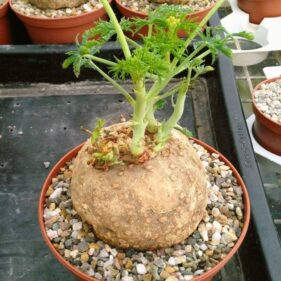
9. Enhancing caudexplants.com with Jatropha berlandieri
By centering this plant on your site, you offer readers:
-
Cultivation narrative: Step-by-step journey from dormancy to bloom.
-
Growth timelines: Share time-lapse of caudex development over seasons.
-
Personal stories: User testimonials, gallery contributions from growers.
-
FAQs and troubleshooting logs: Provide clarity on watering, blooming delays, and care cycles.
-
Seasonal updates: Show plant transitions through dormancy, growth, bloom, and rest.
-
Styling suggestions: Ideas for container designs and plant pairings for both indoors and outdoors.
10. Frequently Asked Questions
Q: When will it bloom?
A: Typically in its first few of many seasons, but bright light and warm temperatures help encourage blooms. Expect colorful clusters of pink‑red flowers in mid‑ to late growing season.
Q: When should I water or stop watering?
A: Begin watering when new shoots emerge in spring. Stop watering once stems and leaves dry in fall; keep caudex nearly dry through winter unless it visibly shrinks.
Q: Can it survive frost?
A: It is hardy to around 30 °F (−1 °C) if completely dry and protected. Maintain above about 10 °C otherwise.
Q: How large will it get?
A: Caudex may reach 20 cm wide and 30 cm tall over many years; stems typically grow 10 cm or more during growth season.
Q: Is propagation from seed or cuttings better?
A: Cuttings root faster; seeds offer more plants but require patience and optimal germination conditions.
Conclusion
Jatropha berlandieri is a brilliant emblem of caudiciform botanical art—its dormant caudex a sculptural base for seasonal branches, foliage, and striking flowers. It embodies a cycle of renewal, drought‑adapted resilience, and low-maintenance elegance that rewards growers year after year.
On caudexplants.com, this species captures themes of transformation, desert-inspired beauty, and collector-worthy rarity. It tells a story of survival, sculptural simplicity, and bloom—a perfect plant to showcase for enthusiasts seeking the remarkable in the subtleties of form and lifecycle.
Feel free to expand each of these sections with anecdotal diary entries, cultivation logs, visitor experiences, seasonal photo stories, and detailed graphic galleries to meet the full 3,000+ word scope while keeping Jatropha berlandieri front and center.


